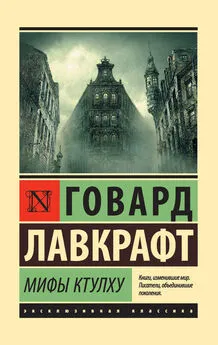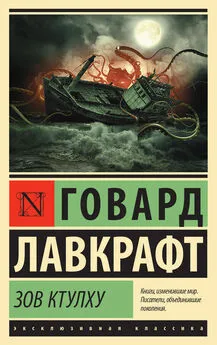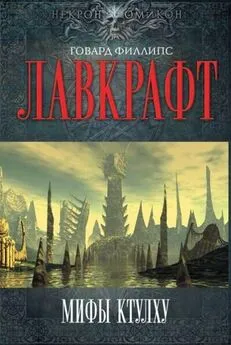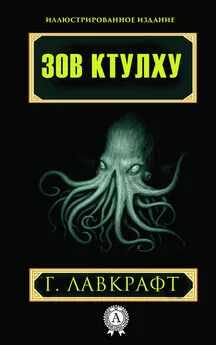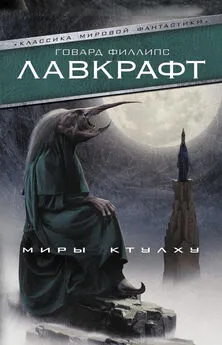Говард Лавкрафт - The Call of Cthulhu / Зов Ктулху (+ аудиоприложение)
- Название:The Call of Cthulhu / Зов Ктулху (+ аудиоприложение)
- Автор:
- Жанр:
- Издательство:неизвестно
- Год:2020
- Город:Москва
- ISBN:978-5-17-116423-2
- Рейтинг:
- Избранное:Добавить в избранное
-
Отзывы:
-
Ваша оценка:
Говард Лавкрафт - The Call of Cthulhu / Зов Ктулху (+ аудиоприложение) краткое содержание
Английские тексты полностью озвучены носителями языка и бесплатно доступны для прослушивания на официальном сайте издательства АСТ в разделе «Читальня».
Пособие адресовано всем, кто изучает английский язык и хочет читать литературу на языке оригинала.
The Call of Cthulhu / Зов Ктулху (+ аудиоприложение) - читать онлайн бесплатно ознакомительный отрывок
Интервал:
Закладка:
Howard Phillips Lovecraft / Говард Филлипс Лавкрафт
The Call of Cthulhu / Зов Ктулху
Адаптация текста, перевод, упражнения и словарь С.А. Матвеева
© ООО «Издательство АСТ», 2020
Как известно, лучший способ учить иностранный язык – это читать художественную литературу. Но чтение должно быть не только полезным, но и увлекательным. Поэтому мы отобрали для вас лучшие произведения мировой литературы. В книгах серии Bilingua вы найдёте адаптированные тексты произведений на английском языке с параллельным переводом на русский. В дополнение к текстам даются упражнения на понимание прочитанного с ответами и англо-русский словарь, в котором вы можете уточнить значение конкретного слова.
Все английские тексты озвучены носителями языка и совершенно бесплатно доступны для прослушивания на официальном сайте издательства АСТ. Чтобы воспользоваться бесплатным аудиоприложением, необходимо:
• зарегистрироваться в разделе «Читальня» на официальном сайте издательства АСТ (https://ast.ru/reading-room/),
• перейти в каталог «Аудиоматериалы»,
• выбрать нужный аудиокурс.
После этого вы сможете совершенно бесплатно прослушивать аудиоприложение онлайн или скачать на своё устройство и использовать без подключения к Интернету.
Желаем успехов!
The Call of Cthulhu / Зов Ктулху
I. The Horror in Clay
The most merciful thing in the world, I think, is the inability of the human mind to correlate all its contents. We live on a placid island of ignorance in the midst of black seas of infinity, and it was not meant that we should voyage far. The sciences have harmed us little; but some day the piecing together of dissociated knowledge will open up such terrifying views of reality, that we’ll either go mad from the revelation or flee from the light into the peace and safety of a new dark age.
Theosophists have guessed at the awesome grandeur of the cosmic cycle where our world and human race form transient incidents. Their strange suggestions freeze the blood. Forbidden ages chill me when I think of them and madden me when I dream of them. That glimpse, like all dread glimpses of truth, appeared from an accidental piecing together of separated things: in this case, an old newspaper and the notes of a dead professor. I hope that no one else will make this piecing; certainly, if I live, I shall never add a link in that terrible chain. I think that the professor, too, intended to keep silent, and that he was going to destroy his notes but sudden death stopped him.
My first experience began in the winter of 1926-27 with the death of my great-uncle, George Gammell Angell, Professor Emeritus of Semitic Languages in Brown University, Providence, Rhode Island. Professor Angell was widely known as an authority on ancient inscriptions, and the heads of prominent museums had frequently asked him for help; so his death at the age of ninety-two was talked about. Moreover, interest was intensified by the obscurity of the cause of death. The professor had been stricken while he was returning from the Newport boat. He fell suddenly; as witnesses said, after he had been jostled by a nautical-looking negro who had come from one of the queer dark courts on the precipitous hillside which formed a short way from the waterfront to the professor’s home in Williams Street. Physicians were unable to find any visible disorder, but concluded after perplexed debate that some obscure lesion of the heart, induced by the brisk ascent of a steep hill by so elderly a man, was responsible for the end. At the time I saw no reason to dissent from this dictum, but latterly I began to doubt.
As my great-uncle’s heir and executor, for he died a childless widower, I had to study his papers; and for that purpose I moved his files and boxes to my quarters in Boston. Much of the material will be later published by the American Archaeological Society, but there was one box which I found very puzzling, and which I did not want to show to other eyes. It had been locked and I did not find the key till I examined the personal ring which the professor carried in his pocket. Then, indeed, I opened it, but when I did so I confronted a greater barrier. What was the meaning of the queer clay bas-relief and the disjointed jottings, ramblings, and cuttings which I found? Had my uncle in his latter years become superstitious? I decided to find the eccentric sculptor responsible for this apparent disturbance of an old man’s mind.
The bas-relief was a rough rectangle less than an inch thick and about five by six inches in area; obviously of modern origin. Its designs, however, were far from modern in atmosphere and suggestion. And there was writing of some kind; but my memory could not identify it.
Above hieroglyphics was a figure, an impressionistic picture. It was a sort of monster, or symbol representing a monster, of a form which only a diseased fancy could conceive. If I say that my extravagant imagination offered simultaneous pictures of an octopus, a dragon, and a human caricature, I can present the spirit of it. A pulpy, tentacled head surmounted a grotesque and scaly body with rudimentary wings; and the general outline of the whole monster made it most shockingly frightful. Behind the figure was a vague Cyclopean architectural background.
The writing was made by Professor Angell’s most recent hand; and made no pretense to literary style. The main document was headed “CTHULHU CULT” in characters painstakingly printed to avoid the erroneous reading of an unknown word. This manuscript was divided into two sections, the first of which was headed “1925 – Dream and Dream Work of H.A. Wilcox, 7 Thomas St., Providence, R. I.”, and the second, “Narrative of Inspector John R. Legrasse, 121 Bienville St., New Orleans, La., at 1908 A. A. S. Mtg.—Notes on Same, & Prof. Webb’s Acct.” The other manuscript papers were brief notes, some of them were the queer dreams of different persons, some of them were citations from theosophical books and magazines (notably W. Scott-Elliot’s Atlantis and the Lost Lemuria ), and the rest comments on long-surviving secret societies and hidden cults, with references to passages in such mythological and anthropological source-books as Frazer’s Golden Bough and Miss Murray’s Witch-Cult in Western Europe . The articles were mainly about mental illness and outbreaks of group folly or mania in the spring of 1925.
The first half of the principal manuscript told a very interesting tale. On March 1st, 1925, a thin, dark young man of neurotic and excited aspect came to Professor Angell bearing the singular clay bas-relief, which was then exceedingly damp and fresh. His card bore the name of Henry Anthony Wilcox, and my uncle had recognized him as the youngest son of an excellent family slightly known to him, who was studying sculpture at the Rhode Island School of Design and living alone at the Fleur-de-Lys Building near that institution. Wilcox was a precocious young genius with great eccentricity, and had from childhood excited attention through the strange stories and odd dreams. He had the habit of relating them. He called himself “psychically hypersensitive”, but the people of the ancient commercial city treated him as merely “queer.” He had dropped gradually from social visibility, and was now known only to a small group of esthetes from other towns. Even the Providence Art Club, which was trying to preserve its conservatism, had found him quite hopeless.
So, as the professor’s manuscript told, the sculptor abruptly asked to help him identify the hieroglyphics of the bas-relief. He spoke in a dreamy, stilted manner which suggested pose and alienated sympathy; and my uncle showed some sharpness in replying, for the conspicuous freshness of the tablet did not show any relation to archaeology. Young Wilcox’s rejoinder, which impressed my uncle, was of a fantastically poetic nature. He said, “It is new, indeed, for I made it last night in a dream of strange cities; and dreams are older than brooding Tyre, or the contemplative Sphinx, or garden-girdled Babylon.”
Then he began his rambling tale which suddenly won the fevered interest of my uncle. There had been a slight earthquake tremor the night before, the most considerable felt in New England for some years; and Wilcox’s imagination had been greatly affected. He had an unprecedented dream of great Cyclopean cities of Titan blocks and sky-flung monoliths, all dripping with green ooze and sinister with latent horror. Hieroglyphics had covered the walls and pillars, and from some undetermined point below had come a voice that was not a voice; a chaotic sensation which only fancy could transmute into sound, but which he attempted to render by the almost unpronounceable combination of letters: “ Cthulhu fhtagn .”
This verbal jumble was the key to the recollection which excited and disturbed Professor Angell. He questioned the sculptor with scientific interest; and studied the bas-relief on which the young man had been working, chilled and clad only in his night clothes. My uncle blamed his old age, Wilcox afterwards said, because he could not recognize both hieroglyphics and pictorial design fast enough. Many of his questions seemed highly inappropriate to his visitor, especially those which tried to connect the things with strange cults or societies; and Wilcox could not understand the promises of silence which he was offered in exchange for an admission of membership in some widespread mystical or paganly religious society. When Professor Angell became convinced that the sculptor was indeed ignorant of any cult or system of cryptic lore, he asked his visitor to supply him with future reports of dreams. This bore regular fruit, because after the first interview the manuscript records daily visits of the young man, during which he related startling fragments of nocturnal imagery. He was always talking about some terrible Cyclopean views of dark and dripping stone, with a subterrene voice or intelligence shouting monotonously enigmatical uninscribable gibberish. The two sounds frequently repeated are rendered by the letters “Cthulhu” and “R’lyeh.”
On March 23, the manuscript continued, Wilcox did not come; he had been stricken with an obscure fever and taken to the home of his family in Waterman Street. He had cried out in the night, arousing several other artists in the building, and had showed since then only alternations of unconsciousness and delirium. My uncle at once telephoned the family, and from that time watched the case; calling often at the Thayer Street office of Dr. Tobey. The young man’s febrile mind, apparently, was dwelling on strange things; and the doctor was shuddering as he spoke of them. They included not only a repetition of what he had formerly dreamed, but concerned gigantic things “miles high” which walked or lumbered about. He never fully described these objects but occasional frantic words, as repeated by Dr. Tobey, convinced the professor that they were identical with the nameless monsters he had depicted in his dream-sculpture. Reference to this object, the doctor added, was invariably a prelude to the young man’s lethargy. His temperature, oddly enough, was quite normal; but the whole condition was like true fever rather than mental disorder.
Читать дальшеИнтервал:
Закладка:

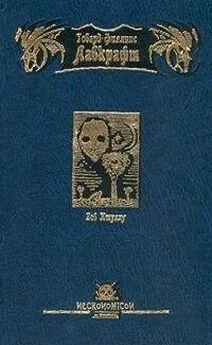
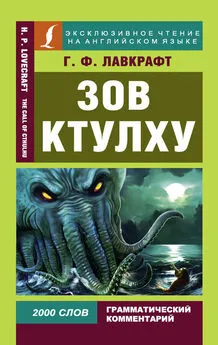
![Говард Лавкрафт - Сны Ктулху [сборник litres с оптимизированной обложкой]](/books/1082374/govard-lavkraft-sny-ktulhu-sbornik-litres-s-optim.webp)
![Говард Лавкрафт - Сны Ктулху [сборник litres]](/books/1082388/govard-lavkraft-sny-ktulhu-sbornik-litres.webp)
![Говард Лавкрафт - Миры Ктулху [сборник, litres]](/books/1092260/govard-lavkraft-miry-ktulhu-sbornik-litres.webp)
